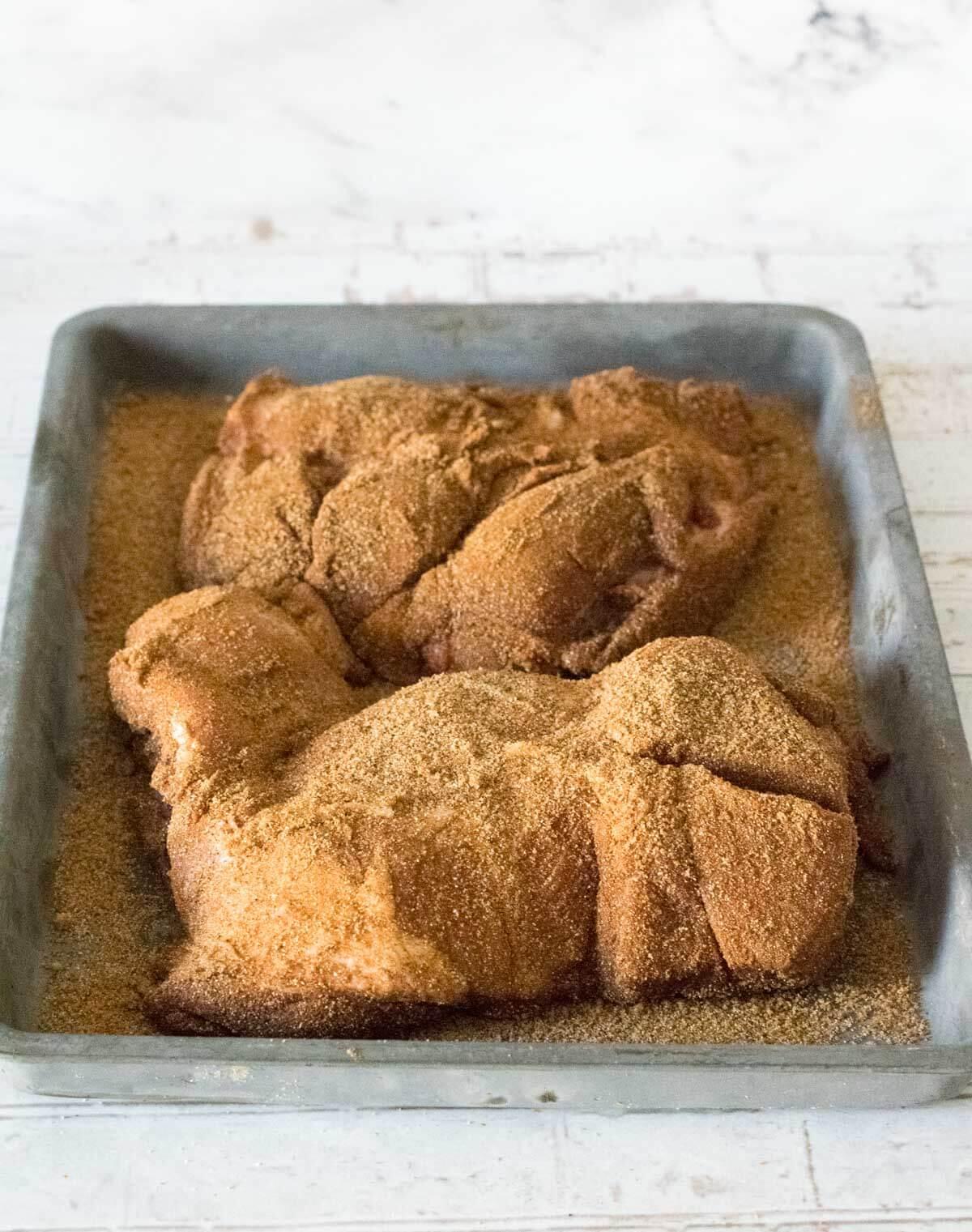Cottage bacon is not your average bacon. It’s a mouthwatering variation made from cured pork shoulder, resulting in a leaner and more flavorful alternative to pork belly bacon. Picture a cross between ham and bacon, with an incredible taste that will leave you craving for more. The best part? It’s fully cooked and ready to be enjoyed straight from the fridge or fried up in a skillet.

If you’ve tried venison bacon or other bacon alternatives before, you’ll find that cottage bacon is a step closer to the real deal. Unlike those alternatives which resemble sliced sausages, cottage bacon is a whole cured meat. Each bite is packed with a distinctively salty flavor and infused with the rich aroma of smoke.
Cottage bacon is also known as buckboard bacon, and you may have come across the term “back bacon”, although that refers to a different variety made from pork loin. In the United States, back bacon is commonly known as Canadian bacon.
What do I need?
To make cottage bacon, you’ll need a few essential ingredients:
- Pork Shoulder Roast: Look for labels such as Boston butt, pork butt roast, picnic roast, or picnic shoulder. While a boneless roast is ideal, you may also find roasts with the bone still intact.
- Prague Powder: Also known as curing salt, Cure #1, or Instacure #1. Prague powder is a mixture of 6.75% sodium nitrite in sodium chloride.
- Salt
- Brown sugar
- Black pepper
- Sweet paprika: Sweet paprika adds a delightful kick to the bacon. If you can’t find it, you can substitute it with regular paprika combined with a dash of cayenne pepper.

How to prepare the pork shoulder
Before you start the curing process, you need to prepare the pork shoulder by trimming off excess fat and removing any bones. While some pork shoulder roasts come with the fat cap already removed, it’s not always the case. Take your time to trim the fat layer and debone the roast without damaging the surrounding meat.
Once the pork shoulder is ready, I recommend slicing it to a thickness of about one to two inches. This will give you a flatter roast that you can slice just like bacon. Refer to the picture below for a visual example.

The Curing Process
When it comes to curing the meat, it’s essential to use the right amount of curing salt. Prague powder, with its sodium nitrite content, not only preserves the meat but also gives it that distinct pink color associated with cured meats. However, it’s crucial not to overuse curing salt due to potential health risks.
To calculate the appropriate amount of Prague powder for your recipe, you can use the equilibrium curing method. For this recipe, use 1.1 grams of Prague powder per pound of meat. Adjust the cure and seasonings accordingly if you’re working with larger roasts.
Mix the Prague powder with salt, pepper, sugar, and paprika, ensuring that the seasoning is well combined. Coat the entire pork shoulder with the seasoning mixture. Don’t worry if it seems like there’s excess seasoning. As the meat cures, it will release liquid, causing the seasonings to adhere perfectly to the meat.

Place the seasoned pork shoulder, along with any remaining seasoning, in a gallon-sized zip lock bag. Refrigerate it for 7-9 days, flipping the bag over daily to ensure even curing.
Smoking your bacon
After a week of curing, it’s time to transform your pork shoulder into delectable homemade cottage bacon. Remove the cured pork shoulder from the refrigerator and rinse it thoroughly under running water to remove any excess seasoning. Pat it dry with paper towels. You’ll notice that the flavor has penetrated deep into the meat, which will now have a darker color.

Prepare your smoker by heating it to 200 degrees and adding your preferred wood chips for flavor. Place the pork roasts in the smoker and smoke them for approximately 2 hours or until the internal temperature reaches 150 degrees. It’s crucial to use a digital thermometer to ensure it reaches the right temperature.
At this point, your cottage bacon is fully cooked. Allow it to cool, then slice it thinly and savor every bite. While a standard chef knife will do the job, using a deli slicer makes slicing an effortless task.

How to store it
If you plan to consume the bacon within a week, store it in an airtight container in the refrigerator. For longer storage, portion it out into multiple freezer-safe containers and freeze until you’re ready to enjoy it.
How to serve it
Cottage bacon is incredibly versatile, making it perfect for a variety of dishes. Here are some of my favorite ways to enjoy it:
- Egg Sandwich: Fry up the cottage bacon and use it as a flavorful topping for an egg sandwich.
- Deli Sandwich: Pile cold slices of cottage bacon on bread and enjoy it as a classic ham sandwich, adding a dollop of Dijon mustard for extra zest.
- Omelet: Incorporate fried cottage bacon into your favorite omelet for a protein-packed breakfast.
- Salad: Chop the bacon into small pieces, whether hot or cold, and sprinkle it over your favorite salad for a tasty twist.

So, why not give cottage bacon a try? You can savor it cold or fried, and its unique flavor will elevate any dish. If you enjoyed this post, feel free to share it with your friends. For more mouthwatering recipes, visit Ekilove, and subscribe to our newsletter to stay up to date with all the latest culinary delights.



